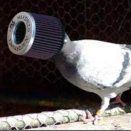Please explain dif between Internal & External gate
Announcements
-
Latest Posts
-
Did you find that your voltage of the battery wasn't where it's normally supposed to be? for example on my r34, it's at 14.5v when running after a few seconds, but I noticed when I had a rough start and it initially wasn't idling correctly, the voltage on my triple gauge cluster was showing lower than usual. Seems like the alternator is starting to crap itself
-
And, given that you're in NC, go buy an LS7 or something equally sweet and piss that crappy old RB off. Or call up Wesley Kagan and get his help putting a Merc V12 into it.
-
Do a compression test, and a bore scope on the cylinder that lost parts of the plug. Chances are, that cylinder isn't so happy anymore...
-
Update from today; Hard work was completed today behind a computer... Ha ha Hardlines for new fuel lines ordered, and fittings for it to connect up too. Banjo fittings for owner steer ordered too, will be AN fittings. Ordered all the weld on fittings I need to build the PS reservoir too. Only things I'll need left for power steer is a couple of off the shelf fittings for the pump, and to build 3 lines.
-
By Dose Pipe Sutututu · Posted
That's a DB1521 (Benshit reference code).
-





Recommended Posts
Create an account or sign in to comment
You need to be a member in order to leave a comment
Create an account
Sign up for a new account in our community. It's easy!
Register a new accountSign in
Already have an account? Sign in here.
Sign In Now